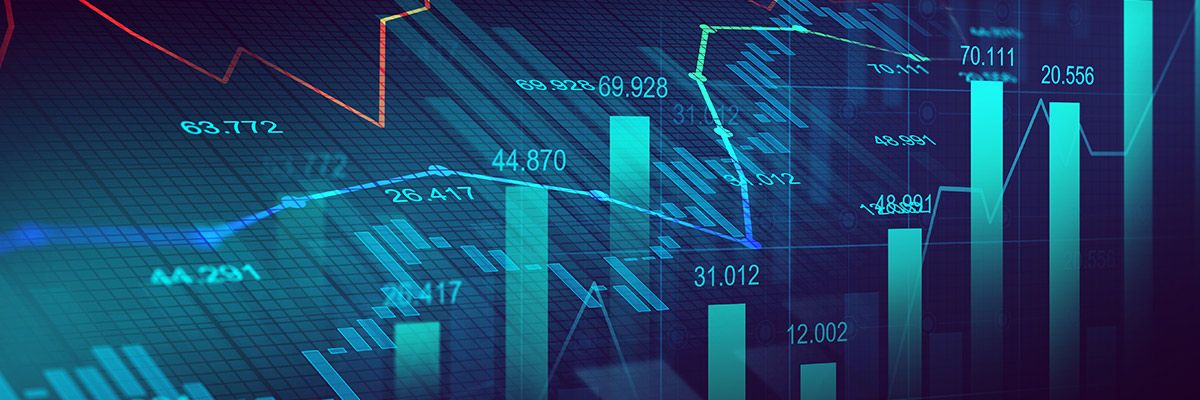What to Expect from the Markets and Economy in 2023

In the past two years, we’ve endured a slew of challenges brought on by a global pandemic, many of which could be described with one of the most used words of 2020 – unprecedented. Maybe these highlights will jog your memory: all-time high unemployment rates that have dropped to incredible lows, zero interest rates that have skyrocketed seemingly overnight, bloated personal savings rates, never-before-seen government stimulus packages and – everyone’s favorite – record-breaking inflation.
Well, that was already a rollercoaster of a ride in just a few sentences, wasn’t it? That’s how the markets and the economy felt as well. And as we move into 2023, the waves of uncertainty are still thrashing about. What does that mean for the new year? What will the economy and markets look like and, most importantly, what do those implications mean for credit unions?
Current Economic Conditions
To get to the bottom of these questions, let’s start with a quick recap of the current landscape.
Inflation is still quite high, sitting around seven percent as measured by the Consumer Price Index. Keep in mind that the Federal Reserve’s target inflation rate is two percent, so we’ve been experiencing a significant inflationary impact for the past several quarters. Although inflation does seem to be retreating slightly – thanks in large part to the Fed’s aggressive rate hiking campaign, among other things – it’s still extremely elevated and both businesses and consumers are feeling the effects.
As a result, consumer confidence has begun to slip. With the combination of high inflation, higher rates than we’ve seen in over a decade (and for some younger generations, in their adult lifetime) and an erratic stock market, personal finances are starting to lose momentum. This is especially true after record spending on goods during the pandemic when stimulus money was prevalent and personal savings were high. Now, borrowing and credit card debt are starting to increase so that households can pay their bills, purchase basic necessities such as food and gas (which are still sitting at elevated prices) and spend money on services that were unavailable during the height of the pandemic – i.e., travel, restaurants, etc.
The Fed is still going strong on their fight against inflation, continuing to raise rates at a rapid pace. Although they are likely to slow the rate increases, we can’t ignore the fact that interest rates have gone up over 400 basis points over the past 12 months – an astonishing feat, to be sure. Rates are a major factor in combatting inflation, and they go hand-in-hand with the jobs market, which is still holding strong. There are certainly lingering participation issues within the workforce – namely women who have no reliable source of childcare, people suffering from long Covid, people who don’t want to contract Covid and older generations who are retiring altogether – but unemployment remains low while the job force is relatively strong. On the flip side, however, job openings and quit rates are still at record highs, which only inflames the wage pressures businesses are feeling.
It’s a mixed bag at the moment, but I would argue that perception plays a role in how we view the economy and the markets as they are today. Sure, rates are higher than we’ve been used to, but in all actuality, what we’re seeing is quite normal. Overnight rates of three to five percent were the norm before the financial crisis. By the same token, mortgage rates are sitting somewhere between five and seven percent at the present time, which is also par the course pre-financial crisis. All this is to say that while we’re seeing an upward trend in rates, monetary policy is actually falling into a more typical pattern, one that we experienced before the financial bubble burst in 2008.
What Fed Officials are Saying
The entirety of the economy really hinges on two things right now – inflation and the Fed’s response to said inflation. Of course, we’ve seen their aggressive stance take shape in the form of rate hikes at an unprecedented rate. But what are Fed officials saying about the future of the economy?
“While higher interest rates, slower growth and softer market conditions will bring down inflation, they will also bring some pain to households and businesses. These are the unfortunate costs of reducing inflation. But a failure to restore price stability would mean far greater pain.”
-Fed Chairman Jay Powell
“If we don’t see progress in underlying inflation, or core inflation, I don’t see why I would advocate stopping at 4.5 or 4.75, or something like that.”
-Minneapolis Fed President Neel Kashkari
“It is a great time to be fighting inflation and it is a great time to try to nip inflation in the bud…while the labor market is strong.”
-St. Louis Fed President James Bullard
“We’re going to need to see a continued run of this kind of behavior and inflation slowly starting to come down before we really start thinking about taking our foot off the brakes here.”
-Fed Governor Christopher Waller
“I think it will probably be appropriate soon to move to a slower pace of increases, but I think what’s really important to emphasize is…we have additional work to do.”
-Fed Governor Lael Brainard
In all, the Fed is very solidly in agreement that rates are the defense that will bring down inflation. Furthermore, they are aware of the potential risks (aka, a recession) that could play out, but are more concerned about fighting the economic tyrant that is inflation.
This sentiment is definitely something we will see continue through 2023. Of course, we may experience the “pain” Fed Chair Powell so aptly spoke of. As far as the recession, there’s a high probability that one will occur based on the Fed’s rate stance; however, it is projected to be small and short-lived. The Fed’s course of action in 2023, which is set to include some additional rate hikes (albeit in smaller increments than originally thought) with the overnight fed funds rate to potentially reach upward of five percent early on in the year, will determine how well the economy will fare in the fight against inflation. And all of this will depend on the data – the same things we talked about above. How those economic components play out will influence Fed policy.
Trends and Events to Expect in 2023
Based on current conditions, the data and the Fed’s stance on rates, what are the economic trends and notable events to expect in the next year? These are only predictions, but I think we should plan for the following:
- A recession. I’d be willing to say that a short-lived recession is certainly possible in 2023 once the lag in rates catches up and really starts working its way through to tamping down inflation. The Fed is slowing down some, but they are in this fight to win. However, with a strong labor market still intact (as we previously mentioned), it’s a very real possibility that any recession could be a minor one. But, as we’ve well learned over the past few years, never say never! We’ll know in time.
- Wage pressures. Look for wage gains to slow but still act as a pain point for employers, including credit unions. Attracting and retaining employees is going to cost more across the board and specifically in service sectors. People are willing to change industries completely to get the better wages, so it’s likely to remain a higher expense for businesses in 2023.
- Lingering effects of supply chain disruptions. The turmoil between Russia and Ukraine, as well as continued Covid policies in China are only going to exacerbate supply chain issues. They are certainly easing, but neither of these issues has been resolved, so we’re likely to see further impacts in the next year.
- Elevated home prices. The days of highly competitive bidding wars on houses have passed and building permits are slowing rapidly, but prices are expected to stay higher than normal. This doesn’t mean a mortgage crisis is imminent – it’s not. But with homeowners experiencing the highest equity we’ve seen in some time and rates rising (albeit to a relatively normal level from pre-financial crisis times), the perception of affordability has shifted. Keep this in mind for your mortgage-seeking members.
- A fixation of inflation versus employment. These are the two key pieces in setting the stage or a recession – or not. Economic experts, the markets and financial institutions are going to have all eyes on these two indicators to see how the year is going to play out. My advice: keep your ears to the ground and pay attention!
Additional Challenges for Credit Unions
With these trends highly probable for 2023, the economy has even more challenges in store for credit unions in terms of finances and operations.
Continued Low Margins
Be prepared to deal with an extended period of unrealized losses in your investment portfolio. Expect to see some of the same trends we experienced this year. Volatility will continue to increase and business cycles will shorten, so take steps now to prepare your portfolio for the hurdles ahead.
Cash and Liquidity
Tightening trends are going to persist in 2023. Cash won’t be stagnant by any means, which will cause impacts to your available liquidity. Watch for members to shop around for deposit rates that pay more than others. To stay competitive, look at what other institutions in your communities are offering on CDs and do your best to match or exceed those.
Higher Operating Costs
It’s not so unusual to expect higher operating costs year over year, but with wage pressures, energy costs, demands for new technologies and so forth, 2023 could prove to be even more expensive than most. Determine what components are most important to your daily operations and start budgeting for increased overhead.
Regardless of how you want to express it – whether as a rollercoaster, a series of waves, etc. – the economy is going to experience a lot of ups and downs in the new year. I might sound like a broken record, but the best way to ride it out comes down to one thing: stay informed so you know what to expect in 2023.
Fred Eisel is Vizo Financial’s chief investment officer. In this role, he is responsible for actively managing Vizo Financial’s investment portfolios as well as overseeing the Corporate’s asset/liability management and investment services.

